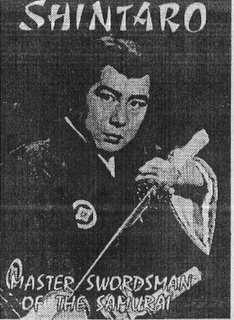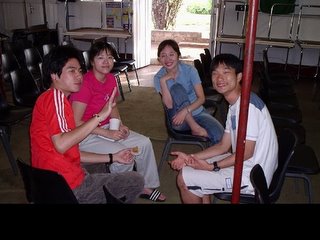Confessions of a Rogue Samurai
I am a Ronin, a Masterless Samurai, a Rogue Warrior. And I am about to commit political hara kiri. Please come witness this absurd display of self-immolation.
I am a PR and political consultant for Filipino politicians. I am the guy who occupies the “Confidential” staff position in the plantilla. My position does not require any Civil Service eligibility and my term of office is co-terminus with my principal. As such, my fate depends entirely on the whims and fortunes of my boss. But although I am not a career government official, I influence how policy and decisions are made.
My job description is nebulous: I do whatever my principal asks me to do. I perform all sorts of tasks: from writing official correspondences to relaying orders to talking to constituents. I get paid to write press releases, develop friendships with editors and reporters, craft PR communication plans and think up odd political gimmicks for my principal. It is my job to know the peculiar dynamics between political actors and to identify/recruit potential “leaders” for my politician-boss. Occasionally, I also analyze data, give policy recommendations and dabble in advocacy work. Although I enjoy doing advocacy work (research, bill drafting and lobbying), my real bread and butter are elections. During the campaign period, I am a sortie organizer, itinerary planner, alliance-builder, close-in staffer, rabble-rouser and all-around gofer. My detractors usually call me a lackey, a factotum, a minion, a sycophant. But I like to romanticize and glorify myself and typically think of myself as a modern-day Samurai.
Like the Samurai warrior of feudal Japan who pledged their lives to their liege lord or Daimyo, I know how it is to work for something larger than myself, to believe in something/someone so much that it empowers me to do things I would not normally do. Like the Samurai who practiced the Code of Bushido and dedicated their lives to perfection, I too live by a certain code of conduct and constantly hone my “skills” to attain perfection.

I am a veteran of several “wars” – as elections in the Philippines are sometimes called. I first cut my teeth during the 1995 Senatorial Elections campaigning for the Lakas-Laban Coalition candidates. Fresh out of Ateneo, I felt I landed the best job in the world. Campaigning for the late Senator Raul Roco, I traveled the whole span of the archipelago in just five months staying in rustic hotels and networking with provincial governors, mayors, local businessmen and youth leaders. I was on a first-name basis with the senatorial candidates, persons who merely a year ago in college I only read about in the newspapers. Like a modern-day Samurai, I was dispatched by my liege lord to places I haven’t heard or been to before with a mission: to charm, cajole and coax VIPs to vote and support my Daimyo. And mind you, the job is not all glitz and glamour. There is also an element of danger involved like the time when I was on the road to Ipil, Zamboanga del Sur to distribute our campaign paraphernalia and meet with local youth leaders there. Coincidentally, Ipil was being raided by the Abu Sayyaf that day. Luckily for me and my driver, we did not run into the retreating Abu Sayyaf bandits on the road. But I have to admit, all the glitter, glamour, pressure and yes, even the close brushes with death are exhilarating. I relish the thrill of the “fight” and also the “spoils” of victory.
Roco was my master, mentor, model, my Daimyo. To embolden me to fight, my Master constantly drilled into me this saying: “courage is the chief of all virtues because no other virtue can arise without it.” Since he demanded perfection in everything that I do, I had no choice but to incessantly practice until I master my craft. Incidentally, Samurai in Nihonggo means “to serve” and we in his Senate staff saw ourselves as true servants of the people; warrior-crusaders fighting to improve the lives of ordinary Filipinos thru policy-making and legislation. All that we expected in return from the common folk was respect and of course, their votes come election time.
 As they say, “in war there develops a bond of brotherhood.” Today, I count among my closest and oldest friends my former co-workers in the Senate staff. As former “trench-mates,” we developed a bond akin to those of war veterans. As proof of how a close-knit unit we were, I married an officemate and so did a couple of my co-workers. Today, most are already married, having kids and settling down but we still meet regularly to relive our glory days on the campaign trail, swap political tsismis and talk about domestic problems.
As they say, “in war there develops a bond of brotherhood.” Today, I count among my closest and oldest friends my former co-workers in the Senate staff. As former “trench-mates,” we developed a bond akin to those of war veterans. As proof of how a close-knit unit we were, I married an officemate and so did a couple of my co-workers. Today, most are already married, having kids and settling down but we still meet regularly to relive our glory days on the campaign trail, swap political tsismis and talk about domestic problems.When our Daimyo died two years ago, we all felt that a void was created that will remain within us for the rest of our lives. With my Master's death, I became a Ronin, a Masterless Samurai. So like Caine in “Kung Fu”, I am doomed to “walk this Earth” and wander the political landscape until I find another Daimyo who will take me under his wing or another cause worth fighting. Surveying the current political landscape, I can see that an unemployed Samurai like me can earn good money working for other Daimyos. I can be employed as a paid-hack, like that Samurai in the classic Akira Kurosawa movie Yojimbo. I can also become a Ninja - shadowy characters who are experts in character assassination, black propaganda and negative campaigning. In fact, after the 2004 elections, I landed several lucrative contracts “projecting” dubious Daimyos. But finding the work distasteful, I resigned.
I am weary of this life of never-ending warfare, constant conflict and incessant intrigues. I want very much to lead a peaceful life and transform myself into an ordinary fellah. I attempted several times to transition into the corporate world but I guess my skills and experiences are deemed irrelevant or not highly-valued in the private sector. Nowadays, I try not to think too much about politics and my previous life as a Samurai. I also do not intend to cast my lot in the ongoing “Impeachment War” because I believe that I will just be used by Daimyos who do not really care about me.
So there, the deed is done and I have already slit my gut for everyone to see. Thank you for witnessing my hara kiri. I hope you enjoyed it. Now get back to work.




